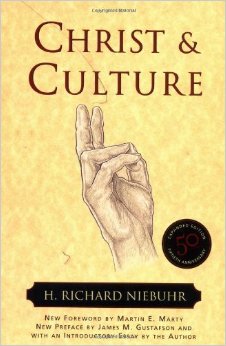 Yesterday, I offered a brief summary of H. Richard Niebuhr’s Christ and Culture, widely regarded as one of the most significant books of the 20th century. Today, I want to press deeper into Niebuhr’s taxonomy and point out some of the strengths and weaknesses.
Yesterday, I offered a brief summary of H. Richard Niebuhr’s Christ and Culture, widely regarded as one of the most significant books of the 20th century. Today, I want to press deeper into Niebuhr’s taxonomy and point out some of the strengths and weaknesses.
“Christ and Culture” – A Closer Look
What should we make of such a landmark work? First, Niebuhr is to be commended for laying out various historical postures Christians have adopted toward culture. These approaches are so memorable that, more than a half century later, scholars who consider the task of Christian ethics feel they must interact with them in some measure. Niebuhr’s breadth of knowledge is on display in his attempt to summarize and point out the strengths of each position, as well as his decision to illustrate his work with biblical or historical examples.
Cracks in the Foundation
The problematic elements of Niebuhr’s work are multilayered. Beginning with the foundation, there are two aspects that deserve comment.
First, Niebuhr gives too much leeway to the Christ of Culture position by including Gnostics and Protestant liberals as a contributing branch of Christianity. If the development of the creeds should teach us anything, it is that the ancient Christians saw Gnosticism, or the “Christ of culture” approach that Niebuhr lays out here, as heretical and therefore outside the realm of legitimate options for relating to culture. Niebuhr’s inclusion of the Gnostics is an indication that he adopts a minimalistic basis for Christian community that leads him to be so open he can include virtually anyone who claims the mantle of Jesus. His critique of the Christ of culture position is on target, of course, but it simply does not go far enough, since in the postscript, he seems to indicate that any of these five options can be a sign of faithfulness, depending on cultural context.
The other problematic element of the foundation is Niebuhr’s appeal to Scripture. It is striking to see him use John the Apostle as an example of Christ the Transformer of Culture (while he simultaneously chides Augustine and Calvin for their obsession with the personal destinies of individual human souls), when an exegete could make a strong case for seeing John’s Gospel as much particularist as it is universal, or as fitting better the Christ against Culture motif (especially if we include Revelation in the Johannine corpus). Likewise, it would not be difficult to move Paul from being the example of Christ and Culture in Paradox to being an advocate for Christ the Transformer of Culture, since a number of Pauline passages could be enlisted in appeal to the other position.
In summary, Niebuhr’s appeal to Scripture is weak. He includes Scriptural elements that make the biblical author representative of a certain posture, even while he freely admits (but conveniently ignores) countervailing evidence in the same passages.
Generalized History
A similar charge could be leveled at Niebuhr’s appeal to history. He shouldn’t be faulted for generalizing, since generalizations are necessary in creating a memorable taxonomy. But the fact that Luther, Augustine, Calvin and Tertullian each, in their own way, resist their imprisonment in these categories is a sign that, instead of choosing between these options, perhaps we should take a cue from these great Christian thinkers, who, while leaning one way or another, cannot be pigeonholed into any one category because Scripture itself does not allow for one view to triumph over the others.
Tipping the Hand
This leads to the last critique. Though Niebuhr claims there is no “Christian answer” to this question, his treatment of Christ the Transformer of Culture is such that the reader is hard pressed to come to any other conclusion than that this is the most faithful approach. Out of the five positions, this is the only one he explains without mention of any weakness. So, even though Niebuhr explicitly claims there isn’t one right answer, he implicitly drives readers to the fifth option as the most faithful and balanced.
Conclusion
Christ and Culture is a classic, and rightly so. My review, which focuses on summarizing and critiquing Niebuhr’s popular book, should not be interpreted as minimizing its contribution to Christianity. H. Richard Niebuhr’s memorable taxonomy of various postures of the church toward the world is an achievement that continues to provoke conversation and controversy more than fifty years later.


















